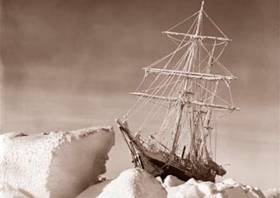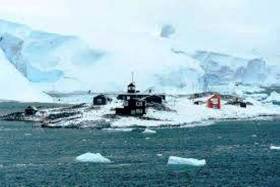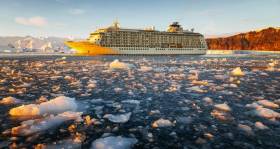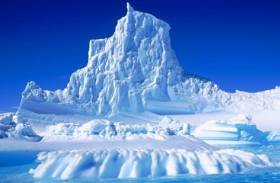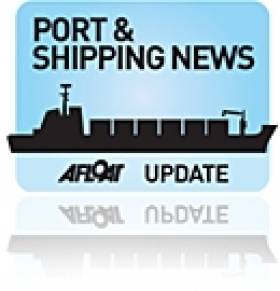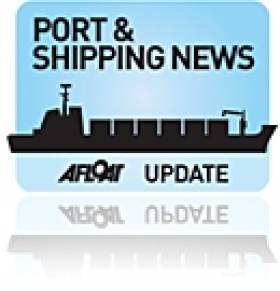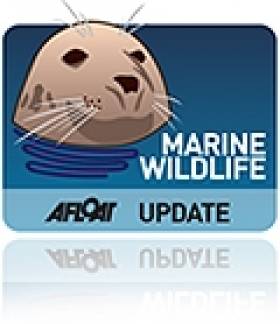Displaying items by tag: Antarctica
Blood And Ice – Working, Racing And Voyaging For Ireland
That headline may suggest the latest Viking television melodrama. And at times Sailing To Antarctica, this new multi-aspect book of memoirs - written moreover in an Irish sea village with strong links to the Scandinavian sea rovers - brings the reader through epic events in remote areas which have Viking history written all over them. Initially, too, blood is very much there. But it was a peaceful interaction, with a first very junior job many decades ago in a primitive early blood transfusion service laboratory. It was to lead Joe Phelan into a distinguished career, to national and international levels, in pioneering medical and surgical technologies, and their support systems.
Meanwhile, in a remarkably balanced life, he took up sailing, and rose through the ranks as owner and crew with exceptional achievements in racing both inshore and offshore, and in world-standard cruising under sail which led to voyages in the ice-bound polar regions that went some way to meeting his lifelong interest in all aspects of nature, and his concern for the well-being of our planet.

When you’re not trying to market the place, you can be a bit more realistic in the naming – this is Cape Desolation. Photo: Joe Phelan
Now, at the age of 81 - albeit in very youthful style - Joe Phelan and his wife Trish, his emphatically equal partner and soul-mate of more than fifty years, continue to sail from Howth with their Hallberg-Rassy 31 Lydia, one of the best and most attractive performance cruisers of her size in Ireland. And Lydia is one of several sensibly-chosen boats they have owned in the course of a long sailing career.
SAILING AND THE OUTDOOR LIFE
Their children and grandchildren share their enthusiasm for sailing and the outdoor life. So the fact that they celebrated their Golden Jubilee Wedding Anniversary in the midst of the Irish Cruising Club Cruise-in-Company in Northwest Spain will suggest to a casual observer that they must be of high-level Dublin sailing establishment stock through several generations, and on both sides of the family.
For Joe has also served as a committee member and flag officer to Commodore level in several clubs, which will add to this easy assumption of a privileged background. But this week’s publication of his fascinating and very impressive memoir Sailing To Antarctica has revealed that they both emerged from families that were strangers to sailing, from fairly ordinary agricultural backgrounds, and folk who were only relatively new to Dublin.

Boat for the job. Although the Amel Super Maramu is a renowned ocean voyager, when Pure Magic returned to Europe in 2005 it emerged that she was the first to have visited Antarctica
Yet the packed-out, remarkably varied and very convivial gathering which filled Howth Yacht Club on last Wednesday night for the book launch - despite appalling weather – was a telling indicator of just how many interesting people’s lives, work and sport the Phelans have interacted with during their fascinating and increasingly high-flying careers ashore, and success-blessed projects afloat.
CREWS OF EXPERIENCED FRIENDS
The memoir is titled Sailing To Antarctica because Joe sees the highlight of his sailing achievement as being the right-hand man for owner-skipper Peter Killen of Malahide, headed to Antarctica in the 54ft Amel Super Maramu ketch Pure Magic in 2004-2005.
Made with a crew of experienced friends drawn mainly from the Howth-Sutton-Baldoyle-Malahide areas, it was apparently the first time that an Amel had made a detailed visit so far south, and thus their achievement was a matter of particular pride to the quality-renowned builders, and it most certainly was something very special indeed for those taking part.
FOUR BOOKS IN ONE
But perhaps the most remarkable thing about the great voyage south was that, while it was the personal high for Joe and his shipmates, for all of them it was just the highest peak in personal mountain ranges of notable lifelong sailing achievements. And Joe’s memoirs give such a vivid picture of growing up and spreading your wings in what is now the very different Ireland of our time, that Sailing To Antarctica is really three or four books in one.
At the core of it, the intensely personal picture in “Book 1” of an intelligent and energetic but sometimes rebellious boy finding his true nature in the Dublin of the late 1940s and the supposedly grim 1950s is done so well that at times you feel you’ve wandered into a more recent version of an episode of Ulysses, or a biographical account of the early life of James Joyce.
For like Joyce, Joe had an improvident father who managed to plough through much of the money from the sale of family farms in Kilkenny in the father’s case, and north Kerry in the mother’s case, thanks to getting into various crash-and-burn business ventures.

“And I’ve got my own white coat”. Joe Phelan in his “first indoor job”, starting a distinguished career in medical technology, analysis and testing, in 1960
But unlike Joyce, Joe’s mother was made of much sterner stuff than the unfortunate May Joyce. Born Elizabeth Barrett, she’d been a woman athlete to national standards when young, but the advent of the Irish Free State in 1922 had seen the iron grip of the Catholic bishops tightening its remorseless claws of repression, until eventually women’s athletics was banned as being unseemly and anti-Catholic. However, as her father Edward Barrett had been Captain of St Anne’s Golf Club, the friendly “people’s club” at the north end of the Bull Island, she found fulfillment through a successful golf career which also saw her being involved in the sport’s administration.
Meanwhile she was holding the family together by ensuring that a substantial house was acquired and retained in Drumcondra even though her husband – despite conspicuous daily displays of religious piety – was still prone to financial misadventures. Nevertheless despite this pillar of maternal strength, it wasn’t always a comfortable environment, and young Joe seemed happiest escaping to the nearby beaches and the Hill of Howth, where on one occasion he almost fell over the cliffs in pursuit of his lifelong interest in ornithology and all sorts of marine animal life.
FIRST JOB AS A BREADMAN’S BOY
It says much about his uncomfortable time in school that his most vivid memory is from 1955 when – aged 14 – he got a holiday job as assistant to the local Johnston Mooney & O’Brien breadman, with the traditional cart drawn by an enormous horse. Joe proved so adept and keen to learn and be helpful that within weeks the breadman felt able to take a holiday, and left little Joe in sole charge of the giant horse, its cart, and the bread round.

Johnston, Mooney & O’Brien’s horde-drawn bread vans were a feature of Dublin life until well into the 1950s
Joe’s account of setting up the entire outfit at first light over Dublin each morning is vivid. You can sense the presence of the massive and occasionally stamping horse, the aroma of the leather bridle and straps, and the tinkle and crashing of the metalwork. There is no way any kid of 14 would be allowed alone near such a potentially lethal setup in a dangerously confined space nowadays, but that’s the way it was in Joe’s schooldays, when he found it difficult to fit into the prescribed range of organised activities in sport in school, and felt happiest roaming outdoors.
Nevertheless, he managed to get through the Leaving Cert, but while many were leaving for England or America in search of better job opportunities, and some managed to go on to University College Dublin, Joe stayed on somewhat aimlessly for a while among his dwindling group of friends. And one night, most appropriately while playing poker with the select few, he heard of a job on offer as an assistant trainee laboratory technician in the nascent Irish Blood Transfusion Service, and he went for it.
A FIRST WIN IN THE GAME OF LIFE
He doesn’t say how he was doing in the poker, but he’d pulled a mighty win the game of life. In those days, the medical profession in Dublin was even more rigidly stratified than it is today, and most would have regarded this lowly post as a dead-end job. But Joe – with his energy, intelligence, and endless curiosity - made it a gateway to achievement, initially through this novel setup which was so new that it was not to receive statutory recognition until 1965, while Joe meanwhile was ascending the career path so steadily that by 1966 he was in a key role in Jervis Street Hospital.
He rose through ranks and positions in areas of health research and testing, some of which seem to have been created mainly in order to provide him with a pathway to success and genuine pioneering achievement, though at other times moving things forward was a real challenge. Initially, working conditions were primitive and very basic in equipment terms. But at the height of his career ,which included being in the forefront of organ transfer and transplant technologies and their logistics, when the new super-hospital was finally being built at Beaumont, it seemed the enormous laboratory facilities were being provided mainly to provide an outlet and testing ground for the wide variety of work being undertaken by Joe Phelan and his by-now large team.

Roy Dickson's Holland 39 Imp – with Joe Phelan in the crew – on her way to winning the Philip Whitehead Cup in the 1987 Fastnet Race. By 1994, Joe and lab colleague Jim Barden were able to persuade the expanded Beaumont Hospital that it should sponsor the Dickson boat in the Round Ireland race.
Indeed, so well-placed was he in the complex Beaumont Hospital hierarchy in its glamour days that in order to help promote the place’s zippy image, he persuaded the management to sponsor a Roy Dickson boat – with himself as a leading crew member - in the 1994 Round Ireland Race. In today’s environment of an over-stressed Health Service, this may seem unlikely, but back in 1994’s get-up-and-go approach to developing and promoting health facilities, it seemed entirely appropriate.
GETTING STARTED IN SAILING
So how does sailing suddenly enter the Joe Phelan story? Well, by the early 1960s, thanks to his dashing style in picking up girls at bus-stops as he tootled past while work-bound on his Heinkel scooter, he and fellow-worker Patricia “Trish” O’Driscoll had become an item, and soon had the makings of a quietly under-stated power couple.
Thus when a colleague at the research bench in the early Blood Transfuson Service labs in Pelican House mentioned she was much enjoying the sailing at Sutton Dinghy Club, it was a joint decision of Joe and Trish to borrow the barely affordable £90 through a sailing-friendly Finance Company manager to buy an IDRA 14, No 5, and head along – totally ignorant of the ins and outs of sailing – to the welcoming Sutton Dinghy Club, where they became members for a £1 annual sub, and were allocated a berth in the dinghy park for ten shillings.

Trish and Joe in their second IDRA 14, coming in from a race at Dunmore East
There’s an appropriate circularity to all this, as Sutton Dinghy Club is just across Sutton Creek from St Anne’s Golf Club, where Joe’s mother had found an alternative outlet for her frustrated athletic talents. And now in 1963, close north cross the water in the friendly little sailing club, Joe and Trish were to find a fulfilling interest which was to add many new dimensions to their already interesting lives, and resulted in their home for a growing family becoming a slightly eccentric but extremely effective house overlooking Baldoyle Estuary, where the friendlier ghosts of the Viking era still linger, and the view across the wildfowl-active and sealife-filled tidal waters made for a nature-lover’s paradise.

The IDRA 14s in one of their heartlands at Clontarf, with Joe and Trish third from right. This is 1974 – the last year before the Ringsend Smokestacks arrived to dominate the view.
Sailing is one of those sports where, the more you put into it, the more you get from it. Thanks to the positive and generous approach of Joe and Trish – with useful guidance from the friendly Sargent family, particularly the ever-helpful Gerry Sargent – Joe soon found his sailing horizons broadening rapidly.
SAILING WITH FOUR SUPERSTAR SKIPPERS
Not only was he progressing his own racing career as a skipper by up-grading the family’s IDRA 14 and broadening the campaigning scope, but his ready enthusiasm and can-do approach saw him - over the coming decades - racing and cruising regularly, both inshore and offshore, with top skippers of the calibre of Mungo Park, Neville Maguire, Roy Dickson and Peter Killen.
Those four names really say it all. By the time he was winding down his offshore racing career with the first three, he’d notched a class win the Fastnet Race of 1987 with the legendary Imp and Roy Dickson, and had sailed with Mungo Park in many ventures on the Sigma 36 Black Pepper, including the overall win in the 900-mile Brighton to Cadiz Race in 1990.

Mungo Park (left) with Black Pepper’s winning crew after the 900-mile Brighton-Cadiz Race – front row (left to right) are Joe Phelan, Jamie McBride, Paddy Cronin and Aidan MacManus.
Before that, while maintaining his personal sailing through involvement with the Lasers and Squibs in Howth, he’d also been on the strength with the hyper-talented Neville Maguire in the Club Shamrock Demelza, working their way towards the overall win in the annual ISORA Championship, and getting a class podium place in the 1986 Round Ireland Race.
There was also a hard-driving Transatlantic race to Cork in a generously-canvassed yet decidedly hefty 50-footer which was being driven downwind to within an inch of her life by a crew of all-Dublin head-bangers. All was well and good until in gale force winds she had a mighty broach-gybe from which she lay down so thoroughly that only the quick thinking of Captain Cool, aka Brian Mathews, got them up again. Yet within half an hour they’d it all together once more with all sail set and back at warp speed, and demented whoops from helm and crew as new speed-burst records were set.
“PROPER CRUISING”
With such a varied suite of offshore racing memories in place, the time was approaching for Joe to give more emphasis to another of his sailing interests – proper cruising. And the Sigma 36 Black Pepper – for discerning sailors, the best of all the Sigma range – comes back into the story, as Mungo Park had sold her on to former Malahide Yacht Club Commodore, Peter Killen, who’d already made his mark with a high-powered cruise round Iceland in a little S&S 30 in 1983.
Ten years later, Peter was already contemplating his retirement life plans after an exceptionally busy career in merchant banking, and having much enjoyed the Iceland venture, his thoughts were drawn towards longer cruises into higher latitudes and more icy waters, for having sailed with him a couple of times, I can attest that his tolerance of cold conditions verges on the superhuman.

Peter Killen wears cold weather gear more as a concession to his shipmates……..

…..for in reality he is almost completely immune to the cold
Joe is more normal on his response to the cold, but he found the lure of high latitudes irresistible, so in 1994 with a brilliantly selected crew, they took Black Pepper to East Greenland. Several Arctic experts had told them that a Sigms 36 wasn’t really suitable for ice work. But she was the boat available, she’d served them well already, and 1994 provided a vertical learning curve in coping with ice which was much more widespread than it is today.

Tricky spot. Black Pepper being pushed to the limit at the east end of Prinz Christian Sund in Greenland in 1994. Photo: Joe Phelan
ANTARCTIC AMBITION
By the turn of the Millennium, the two key men in the Greenland cruise were both contemplating retirement in the early years of the 21st century, and they found they shared an ambition to sail from Ireland to Antarctica to explore as much as possible of the great Southern Continent within the limits of ice levels, then to cruise in detail among the channels of the lower tip of South America in order to assuage Joe’s fascination with Charles Darwin and particularly the voyage of the Beagle. This was to be followed by visiting South Georgia for its own interest and its links to Ernest Shackleton. And then – after an off-season layoff in Capetown - to return to Europe and eventually bring the new boat back to Lawrence Cove on Bere island in Bantry Bay, where the Killen family had long had an alternative home in a very special place whose attractions they now shared with the Phelans.

Dream venue? It is for some – Pure Magic enjoying the summer in Antarctica. Photo: Joe Phelan
FOUR BOOKS FOR THE PRICE OF ONE
But in effect, by the time we get to the story of how the new Peter Killen-owned Super Maramu 54 ketch Pure Magic sailed to Antarctica with Joe Phelan in a central role, we’re into Book 3 of Sailing To Antarctica. Book 1 is the story of Joe’s youth and childhood and youth and early sailing, Book 2 is the story of his very active sailing life in successful racing boats, and Book 3 (with exemplary maps by John Clementson ICC) is the voyaging of Pure Magic, which went on to to include an Atlantic circuit. In typical Killen-Phelan style, this took in a return visit to Greenland, while a subsequent year saw a voyage to Svalbard which means that the Killen ketch is now one of the few voyaging boats in the world which has lain to her own anchor off both the most northerly and the most southerly settlements on the planet.

Official business. The former Commodore of Sutton Dinghy Club and Rear Commodore of the Irish Cruising Club makes a formal visit to the most southerly yacht club in the world.
After this very epic stuff, Book 4 is the more relatable story of how Joe and Trish re-affirmed their dedication to having a boat of their own. There’d always been boats of some kind around the waterfront house in Baldoyle for both adults and children, but even while still actively involved in Pure Magic projects, Joe had up-graded to the ultimately immaculate Shipman 28 Skua, and then when the family SSIA bore fruit, they made the glorious choice of the very able and well-performing yet family-friendly Hallberg-Rassy 31 Lydia to keep life afloat central to three generations of Phelans.

Another dream fulfilled. The Hallberg-Rassy 31 Lydia in Lawrnce Cove on Bere island with three generations of Phelans. Photo: Joe Phelan
This soothing relaxation was well-earned by the successful completion of the Pure Magic voyages. Joe is an invaluable senior member of any crew in many capacities, not least for his tendency to research in meticulous detail anything and everything about the areas they’re about to visit. So although most readers will be drawn to the sheer excitement of accessing the volcanic crater anchorage in the midst of the Antarctic Deception Island when a very sudden total deterioration of the weather clamped down the visibility in the narrow entrance channel known (for reasons you’ll discover in the bk) as Neptune’s Bellows, others will be drawn to Joe’s take on mid-19th Century voyaging, exploration and theorizing of Charles Darwin and Captain FitzRoy aboard the Beagle (and often in her small open boats) in the rugged waters of the Beagle Channel.

After the storm. A brief peaceful period in Telefon Cove off the crater harbour in Deception Island. Photo: Robert Barker

It could be northern Norway, but it’s Caleta Ola in FitzRoy-Darwin territory in the Beagle Channel area
COPING WITH THE TANGO SCHOOL
Against that there’ll be those whose interest will come more alive with the account of being in Argentina while still southward bound, when the entire crew – easygoing friends for many years – found themselves persuaded to enrol together in a Tango school. The appropriately-attractive instructress did not believe in excess clothing, as it hampered her movements, but inevitably photos and stories circulated about these apparently respectable members of the Malahide, Portmarnock, Baldoyle, Sutton and Howth communities “cavorting with a half-naked woman”.

What on earth will they say back home? Bill Walsh takes on the Tango challenge in Argentina
In the interests of truth to the narrative, this could not be excluded from the story under Lambay Rules. But fortunately in making a book out of Joe’s very many words and zillions of photographs, the Editor was Emma Walsh of The Literary Professionals, working in tandem with Carrowmore Books. As one of the crew in the Tango one-to-one class was her father Bill Walsh, she was quite happy to ensure that it is Bill who is seen as bringing Pure Magic to the dance floor.

Joe Phelan in serious mood in Antarctica
SHACKLETON’S GRAVE
On an altogether more solemn note, no Irish sailor can go to South Georgia without visiting Shackleton’s Grave. It is very effectively simple and totally moving, and its impact is increased with the realisation that the great explorer had so worn himself out in saving his Endurance crew and raising funds for Antarctic cruising that he was only 46 when he died of a heart attack, and not 47 as is commonly thought. Forty-six may not seem so very different from 47, but when you’re fully alive and already well senior of Shackleton at his end, it makes for quite an impact.

Time for thought. At Shackleton’s grave are (left to right) Joe Phelan, Robert Barker, Sean Colbert, Peter Killen and John Marrow.
The voyage from South Georgia to Capetown may look fairly straightforward on the chart, but you’re in the lumpy bumpy weather of the Antarctic Convergence for much of it, and though you’re so far north that there are 12 hours of darkness, you’re still in the region of the huge tabular icebergs which in turn suggests there might be smaller less visible ice-made sinkers of fibreglass boats lurking ahead, while the bigger bergs make constant radar watch essential at night.

“You lookin’ at me?” King of the South, the Emperor penguin. Photo: Joe Phelan

An air of menace. Substantial tabular bergs can drift well north into the area of dark nights. Photo: Joe Phelan
CAPETOWN AND ST HELENA’S VIRILE TORTOISE
But they got there to the utterly different atmosphere of sunny Capetown, and after the scheduled long stop, resumed the voyage back to Europe with one of the most entertaining stopovers (in hindsight) being at St Helena, laden for ever with its associations with the last days of Napoleon. This seems to have resulted in a comic opera sort of place, with Napoleon’s house now French national territory, while the rest of the island is administered as though it’s a London borough, complete with a surely excessive police force of six constables. They’ve so little to do that they’ll slap a parking ticket on one of the locals if he or she has presumed to park his car out of alignment with the while lines in the car park.
That however is as nothing to the problems of the few yachts lying in the rolly anchorage as the peace of evening descends, and sleep beckons. For the most famous resident of St Helena when Pure Magic was there was the 174-year-old giant tortoise Jonathon, who was dominant in the garden of the Governor’s residence, Plantation House. Jonathon was seeing out his days as pleasantly as possible with the company of a much younger female tortoise whom he fancied so much that, on some nights, he asserted his conjugal rights with such noisy vigour that it kept the whole island awake, including the crews on the boats in the anchorage.

Dream conditions. When the running rig was in proper action, the going was very good indeed. Photo: Joe Phelan
Such unexpected little snippets of entertainment shouldn’t be allowed to distract us from realizing that Pure Magic made many remarkable cruises, of which the voyage to Antarctica was both a sailing highlight, and a life highlight for those involved. Sailing to Antarctica concludes with what I’d call Book 4, the picaresque story of how a multi-generational sailing family has led Joe and Trish into all sorts of remarkable experiences, including a cruise in the Friesian sandflats on a traditional Dutch barge, re-tracing Erskine Childer’s route for Riddle of the Sands.

Don’t ask. If you want to find out how a re-tracing of Erskine Childers’ Riddle of the Sands with a traditional Dutch barge comes to be in a book called Sailing To Antarctica, you’ll just have to buy it and read it all for yourself.
Sailing to Antarctica is a wonderful read, a real insight into why and how Ireland has developed into one of the most entertaining, fascinating and stimulating places in which to live (and sail) today. But would we be reading it at all if Joe Phelan’s father had turned out to be an absolute whizz in business, and the Bishops had emerged as Lighthouses of Liberality in the new Irish Free State?

Book published - let’s get ready to go sailing soon. Trish and Joe Phelan at Wednesday’s book launch in Howth Yacht Club
SAILING TO ANTARCTICA
A Memoir by Joe Phelan
Price €30
Published March 2023 by Carrowmore Books
A new expedition to find the wreck of Sir Ernest Shackleton’s Endurance will set sail for Antarctica one month after the centenary of his death.
According to The Irish Times, the Endurance22 Expedition aims to find, survey and film the wreck of Endurance, which sank in the Weddell Sea during the Anglo-Irish explorer’s mission to Antarctica in 1915.
Sea ice trapped the three-masted barquentine for more than 10 months before the crew — including Kerryman Tom Crean — escaped by foot and in lifeboats.
The expedition sets out from Cape Town in South Africa on 5 February. Mission director Mensun Bound said: “We will do everything we can to survey and capture footage of Endurance and to bring the epic tale of her final voyage, and of the leadership, courage and fortitude of her crew, to people around the world.”
This past Tuesday 5 January in Connemara, a group of enthusiasts marked 100 years since Shackleton’s passing with readings, recitations and song, as previously reported on Afloat.ie.
World's Largest Iceberg Calves in Antarctica
The European Space Agency (ESA) has confirmed a satellite recording of what may be the world's largest iceberg - slightly larger than the Spanish island of Mallorca.
The ESA says the iceberg was spotted by the British Antarctic Survey and confirmed from the US National Ice Centre with Copernicus Sentinel-1 imagery.
Named A-76, the berg measures around 170 km in length and 25 km wide, and has calved from the western side of the Ronne Ice Shelf, lying in Antarctica's Weddell Sea.
The ESA explains that icebergs are traditionally named from the Antarctic quadrant in which they were originally sighted, then a sequential number, then, if the iceberg breaks, a sequential letter.
"The enormity of the berg makes it the largest in the world, snatching first place from the A-32A iceberg - approximately 3880 sq km in size - which is also located in the Weddell Sea," the ESA says.
An iceberg named A-74 which broke off the Brunt Ice Shelf in February 2021 was only 1270 sq km, it says
#Shackleton - A new expedition is being launched next year that will attempt to find the wreck of Ernest Shackleton’s Endurance in the Antarctic.
As BBC News reports, the primary focus of the scientific mission is to study the Larsen C Ice Shelf, from which one of the biggest icebergs ever recorded split last summer.
But since the ice shelf is close to the last known position of the Endurance, which was lost in 1915, “it would be a shame not to [try to find it],” said Prof Julian Dowdeswell, director of the Scott Polar Research Institute at Cambridge who is leading the international mission.
It’s expected that ROVs for surveying the ice shelf will also be used to have a deeper look beneath the thick ice in the Weddell Sea where the Endurance is believed to lie.
BBC News has much more on the story HERE.
Is Antarctica Safe for Cruise Ships?
There’s increasing concern about cruise ships in the Antarctic and whether people could be rescued should one get into trouble amidst the ice. 300 ships traverse that Polar region, with nearly a quarter-of-a-million tourist visitors aboard from November to March every year. The international search-and-rescue station in the region is operated by the Chilean Navy and named after the first Chilean Head of State and legendary revolutionary leader, Bernardo O’Higgins, whose father was from County Sligo. It’s the only permanent Chilean base on the Antarctic mainland, located on Puerto Covadonga since 1948.
More cruise lines are offering trips there and there is more and more pressure on the area from tourists and from demands for exploration.
Two weeks ago I met the seafarer who took the largest ice-breaking vessel through the ice at the earliest possible time of the year this year. It was a historic journey. So this week on my Podcast, when I bring you a selection of items from my radio programme THIS ISLAND NATION, I’m taking you to the Polar regions and to that unique SAR rescue station.
Also on this PODCAST edition, I was shocked to hear what Dr.Simon Berrow, Chief Science Officer of the Irish Whale and Dolphin Group, had to tell me about the damage which plastic in the oceans is doing, particularly to whales.
As I walk along the shore at Monkstown in my home village in Cork Harbour I see more marine debris washing in, particularly plastic. Do you see the same in your part of the coast.
What Dr.Berrow has to say should make us all think….
Listen to the Podcast below
Tom MacSweeney presents the maritime programme, THIS ISLAND NATION
Mega Yacht Sets New Record For Most Southerly Navigation
#Offshore - A giant private yacht has broken the record for the most southerly navigation, reaching 78°43.997’ S and 163°41.421’ W at the Bay of Whales in Antarctica’s Ross Sea.
The World, a 43,188-ton yacht with 272 crew and carrying 145 residents and guests, recorded the new polar record – the furthest any vessel has ever sailed – at 10.41 ship’s time (New Zealand time) on Saturday 28 January.
The mega yacht, which circumnavigates the globe every two to three years, is currently undertaking a 22-day expedition of the Ross Sea, including 12 days in Antarctica assisted by EYOS Expeditions led by Rob McCallum.
Commenting on the new record, The World’s Captain Dag H Saevik said: “When we designed this remarkable expedition to the Ross Sea with our residents, that has taken two years of preparation, we hoped that with the right conditions we might be able to reach the ice shelf and set a new record for the most southerly navigation.
“This voyage of more than 5,000 nautical miles has taken us to the most isolated area of the world. Explorers like Amundsen, Shackleton and Scott have always been driven to explore the furthest boundaries. However, not many people get to travel to the end of the earth from their own home.”
Few vessels have made the journey to this remote part of Antarctica. In February last year, the polar expedition vessel Akademik Shokalskiy reported reaching 78°43.971’S.
The Forgotten Ballinacurra Finder of Antarctica
In the proud annals of Irish explorers there is a forgotten name and it surprises me that so few Irish people know about him.
When I have mentioned the name of Edward Bransfield, very few have had any knowledge of him.
Yet his story is an amazing part of Irish, British and world maritime and exploration history which a person no less than Vladimir Putin of Russia is set to challenge, disputing the achievements of this man.
The Antarctic is the focus of a lot of attention at present.
There are fears that the Larsen C ice shelf, almost as big as County Cork, could break off. If it does that could raise sea levels by as much as four inches.
There is another story about Antarctica, quite fascinating, which you can hear on this edition of THIS ISLAND NATION, the maritime programme, involving a man from the small village of Ballinacurra, on the edge of Cork Harbour.
It is the story of Edward Bransfield, the Irishman who discovered Antarctica but, amazingly, is not recognised for that achievement. Taken, probably ‘press-ganged’ from his father’s fishing boat in Cork Harbour as a young man by the British Navy, he rose through the ranks to command ships in the service and first sighted Antarctica on January 30, 1820… the anniversary is but a few days away.
Jim Wilson is a highly respected ecologist and ornithologist of 40 years’ experience who is in the Antarctic at present, where he has been going for many years, as a guide. He comes from Cobh, not far from Ballinacurra and is part of a group which intends to provide the first memorial to honour Bransfield, but they don’t even have a photograph of him, because none is known to exist. And they expect opposition from Russia.
Putin versus the Cork village of Ballinacurra….. Now there’s a story which you can listen to here on this week’s edition below
Stranded Antarctic Passengers Rescued By Helicopter
#AntarcticIce - The Guardian reports that a helicopter mission to rescue stranded passengers - including two of the paper's journalists - from a research vessel stranded by ice in Antarctica has been successful.
As previously reported on Afloat.ie, the Akademik Shokalskiy became trapped in pack ice far south of Tasmania on Christmas Eve after embarking on a private expedition retracing the route of Australian explorer Douglas Mawson a century ago.
A number of attempts to reach the stricken ship by icebreaker failed due to poor weather, with lack of visibility also hampering plans to airlift the passengers from the vessel by helicopter.
But it's been confirmed that a rescue chopper sent from the Chinese icebreaker Xue Long managed to land next to the Akademik Shokalskiy in the early hours of this mooring (2 January) to retrieve the first group of passengers, most of whom were removed to the icebreaker Aurora Australis after five back-and-forth flights.
The Russian crew of the ship will remain on board to free it from the ice when conditions improve as is forecast over the next few days.
The Guardian has much more on the story HERE.
Antarctic Vessel Remains Trapped In Ice As Latest Rescue Effort Stalls
#AntarcticIce - A research vessel carrying journalists from the UK's Guardian remains trapped in Antarctic ice after a failed attempt by an Australian icebreaker to reach the ship, the newspaper reports.
The Akademik Shokalskiy has been trapped for more than a week far south of Tasmania, some 100 nautical miles from the French Antarctic station Dumont D'Urville, after embarking on a private mission to mark the centenary of Australian explorer Douglas Mawson's expedition to the ice-bound continent.
A previous rescue attempt by Chinese icebreaker the Snow Dragon was halted by thick ice within sight of the trapped vessel, while the latest effort by the Aurora Australis reached as close as 10 nautical miles before it was forced to turn back thanks to poor visibility, which is also hampering plans to airlift the stricken ship's 74 passengers and crew.
The Guardian's Alok Jha and Lawrence Topham are currently updating their experiences on the paper's Antarctica Live blog.
'New Life' Discovered In Antarctic Lake
#MarineLife - Scientists from Russia say they have found a new form of bacterial life in Antarctic water cut off from the surface for millions of years, as BBC News reports.
The research team at Vostok, the largest subglacial lake on the continent of Antarctica, are studying samples of bacteria from water released after drilling through some 4km of ice to the lake beneath.
The body of water at Vostok is believed to have been isolated for so long that the possibility of it hosting microbial life new to science is high - and scientists say their initial findings are promising.
"We are calling this life form unclassified and unidentified," said geneticist Dr Sergei Bulat of the St Petersburg Institute of Nuclear Physics, who added that one particular form of bacteria has DNA less than 86% similar to known strains.
"A level of 90% usually means that the organism is unknown," he said.
These astounding new findings are however pending verification by other experts before any confirmation can be made.
BBC News has more on the story HERE.


























